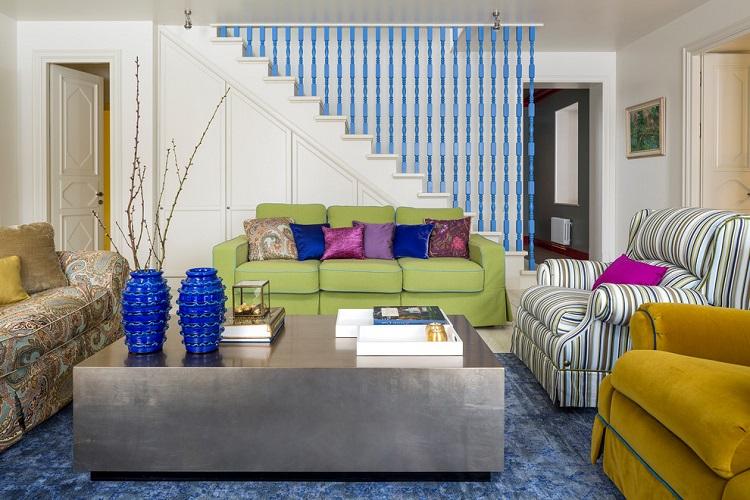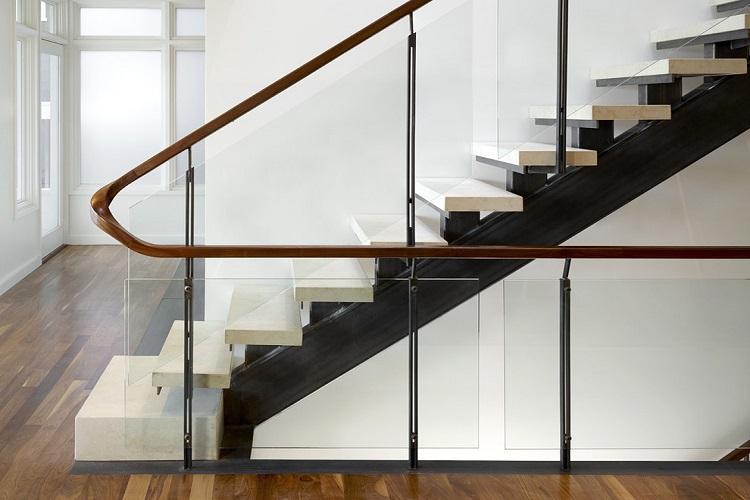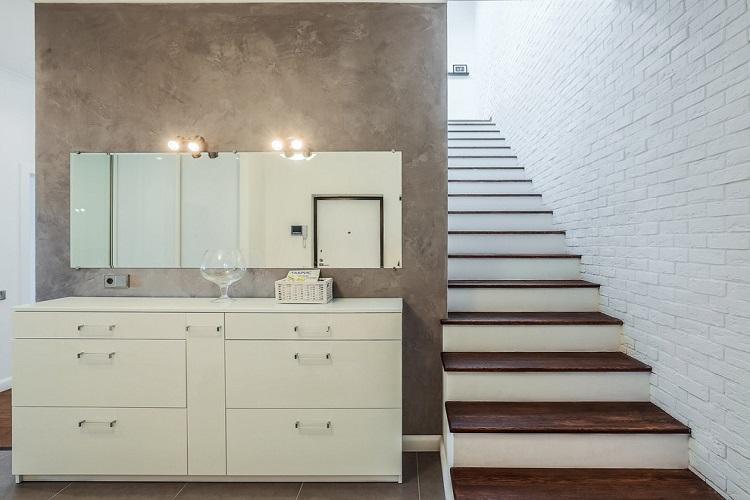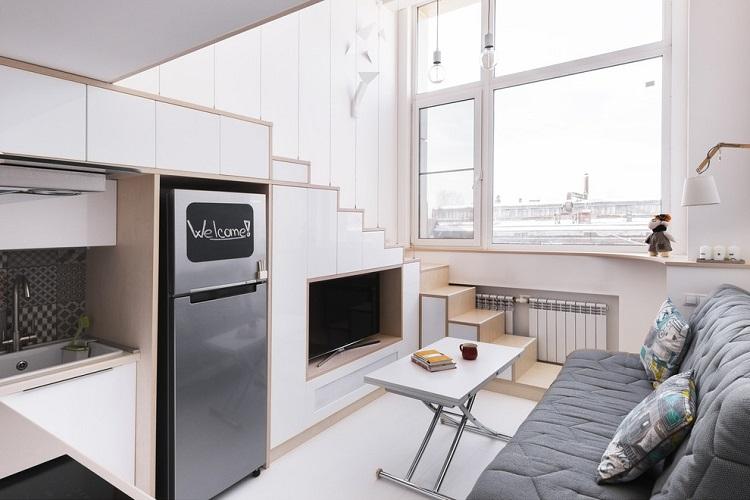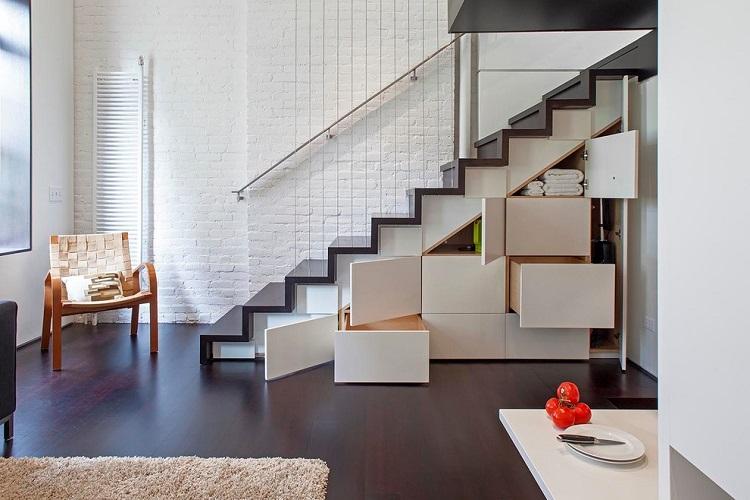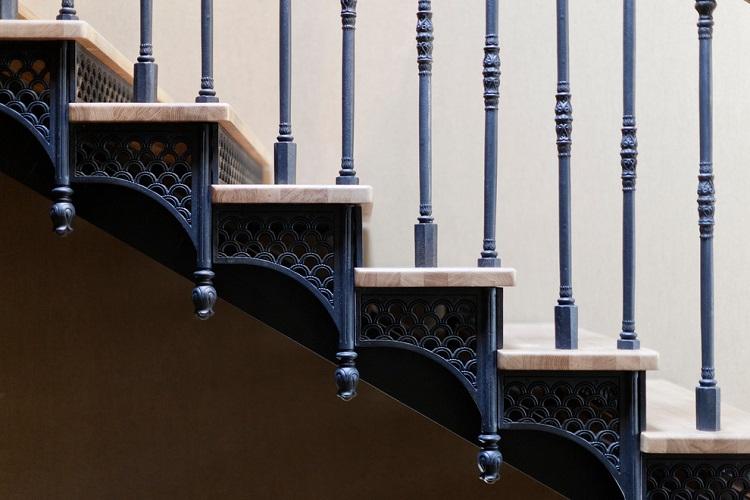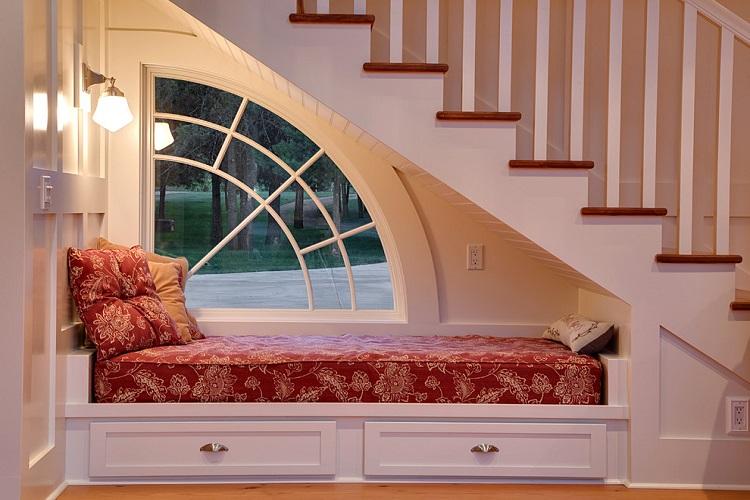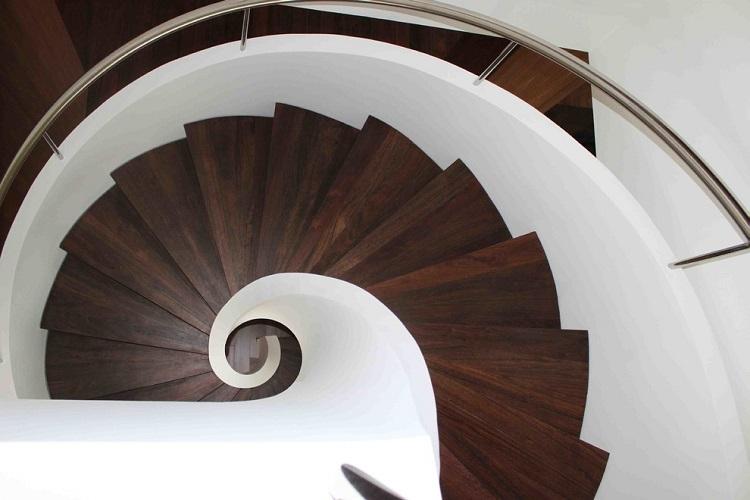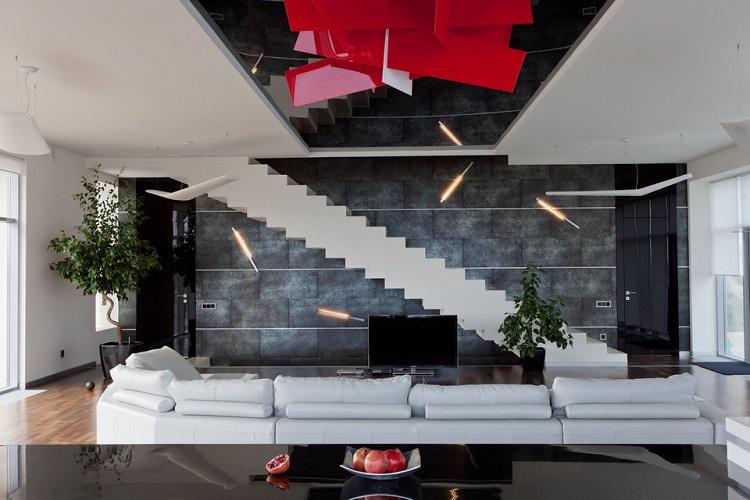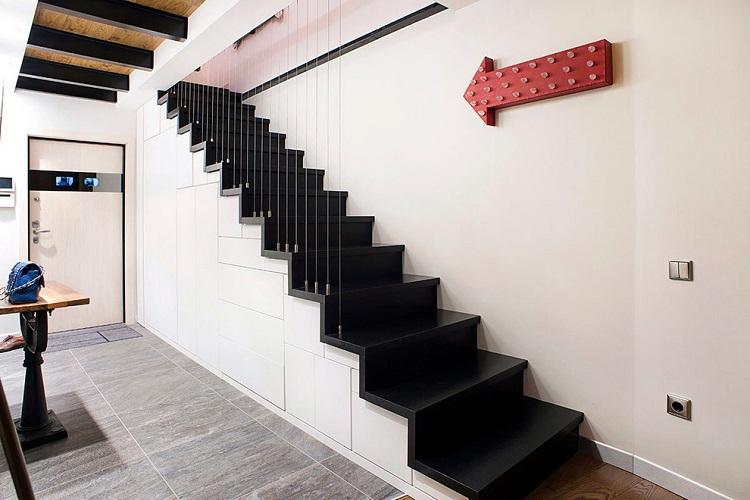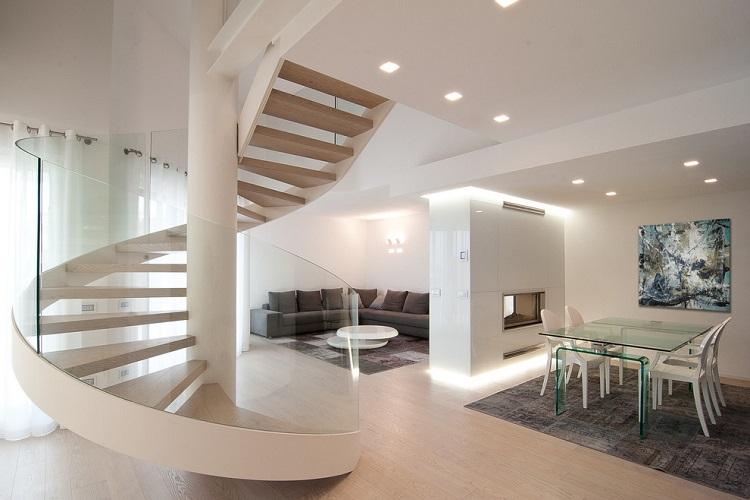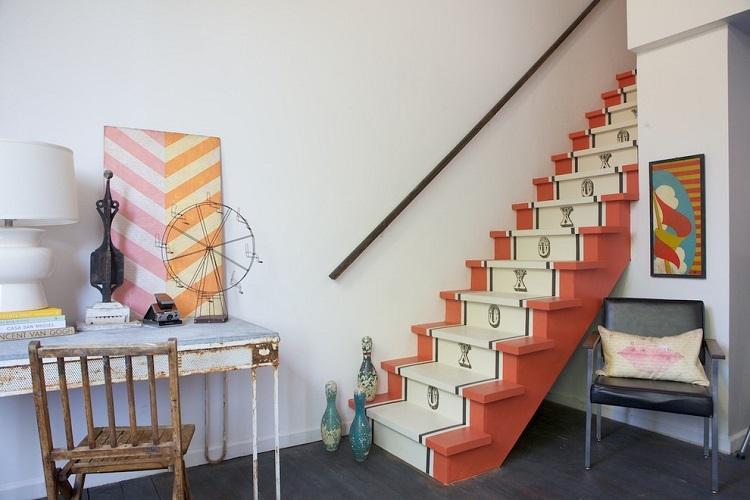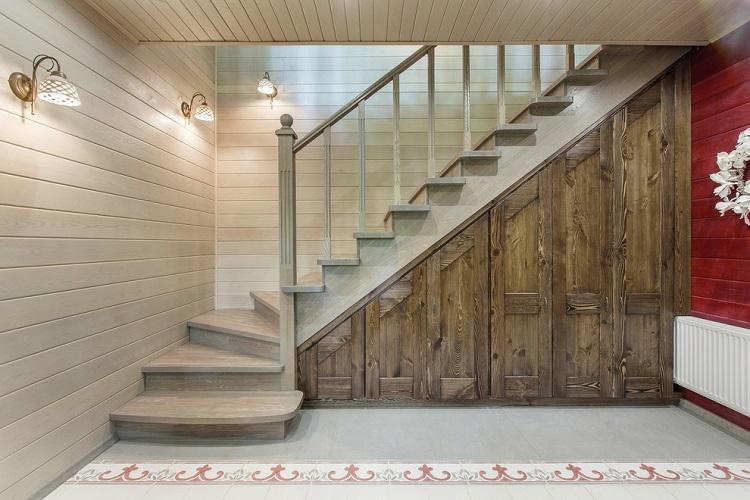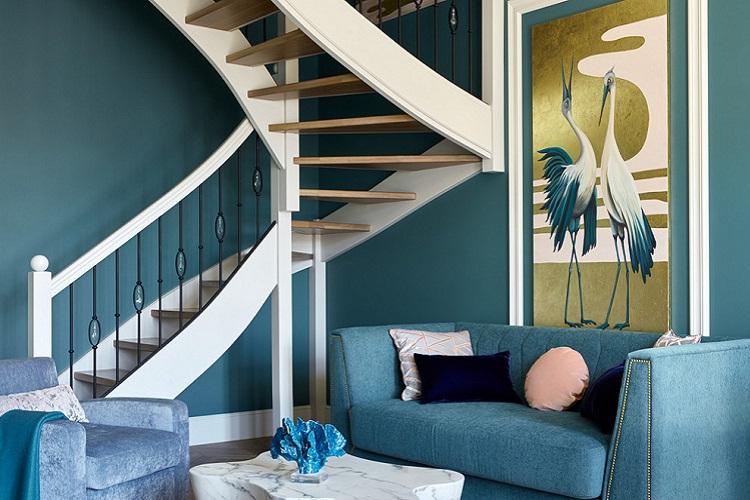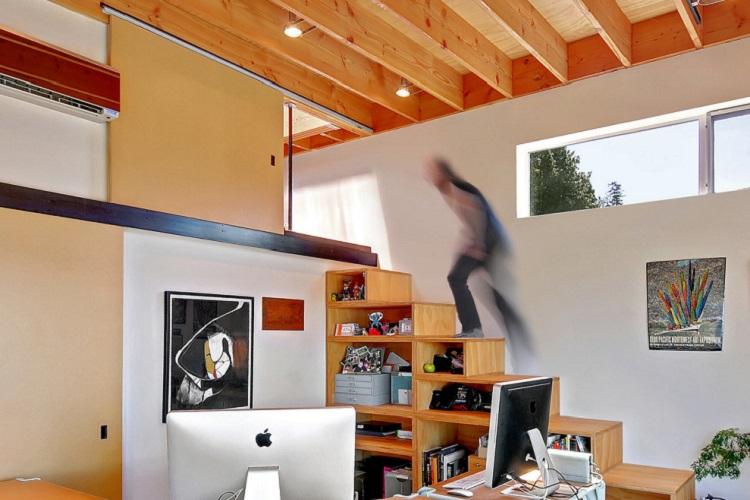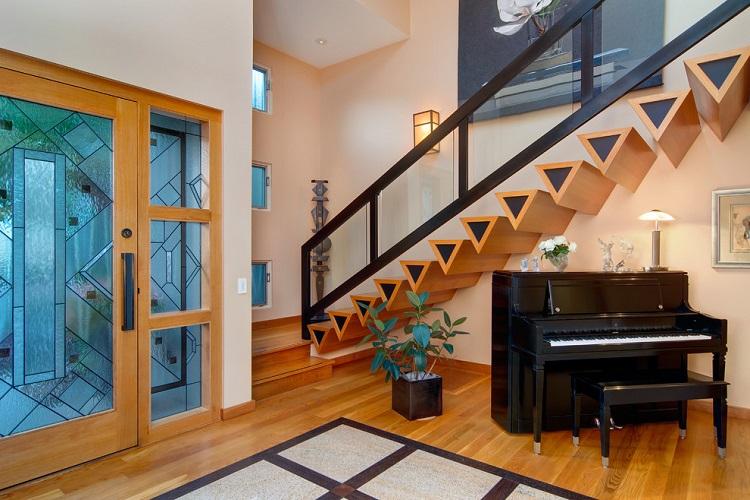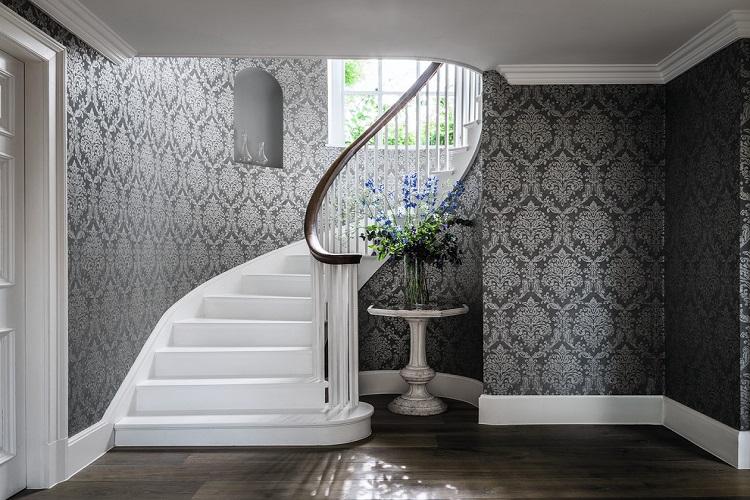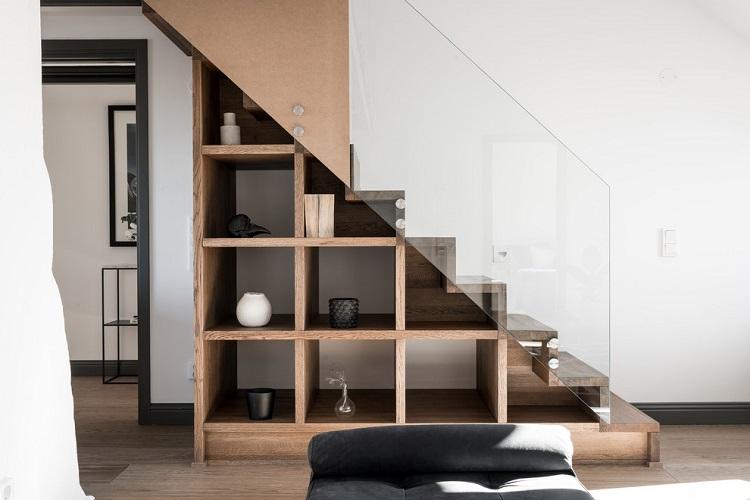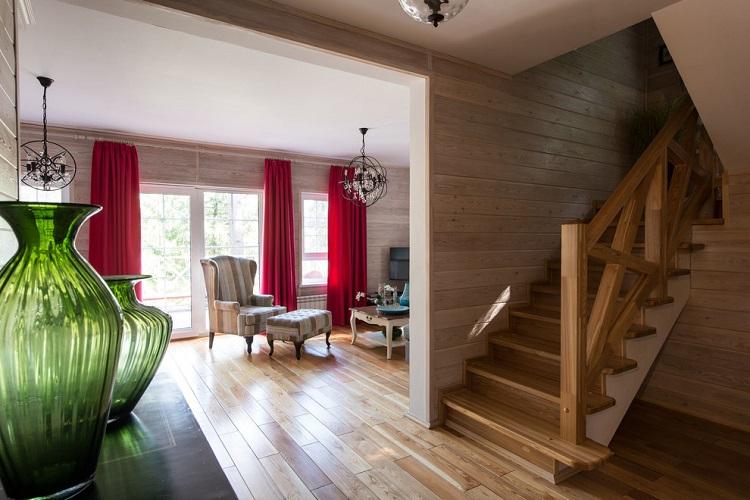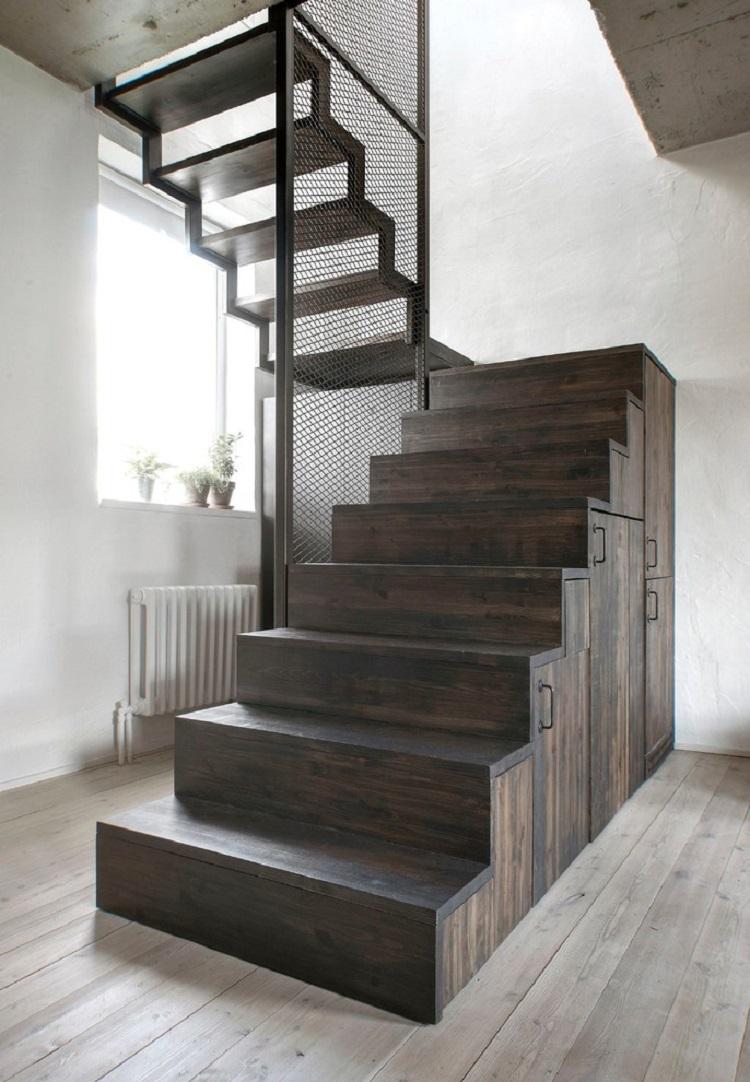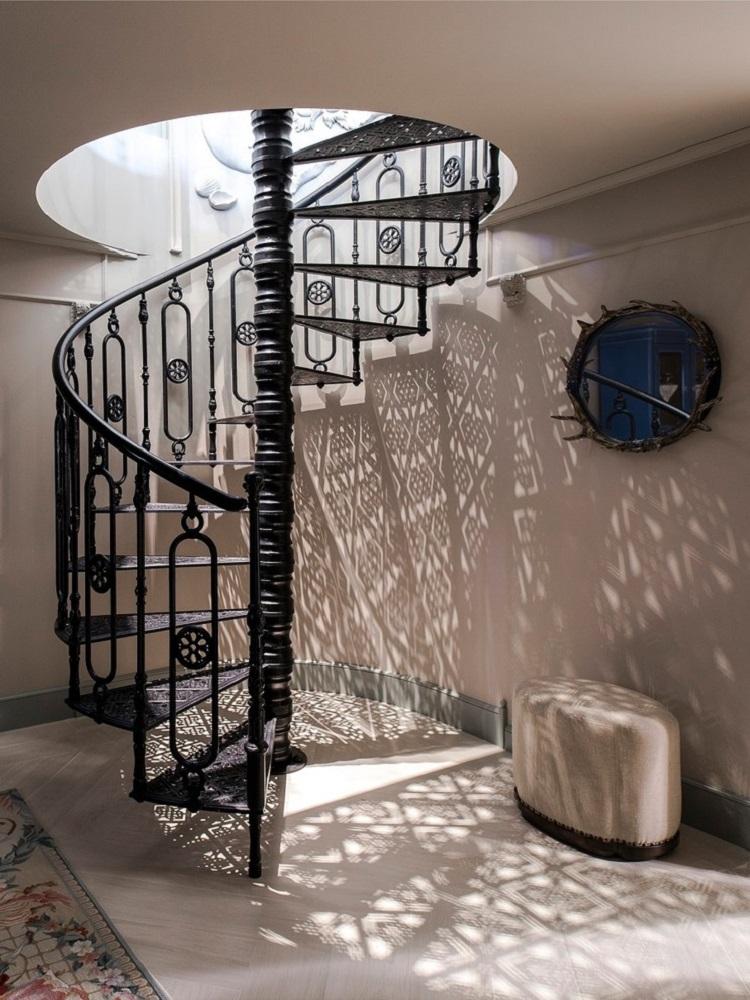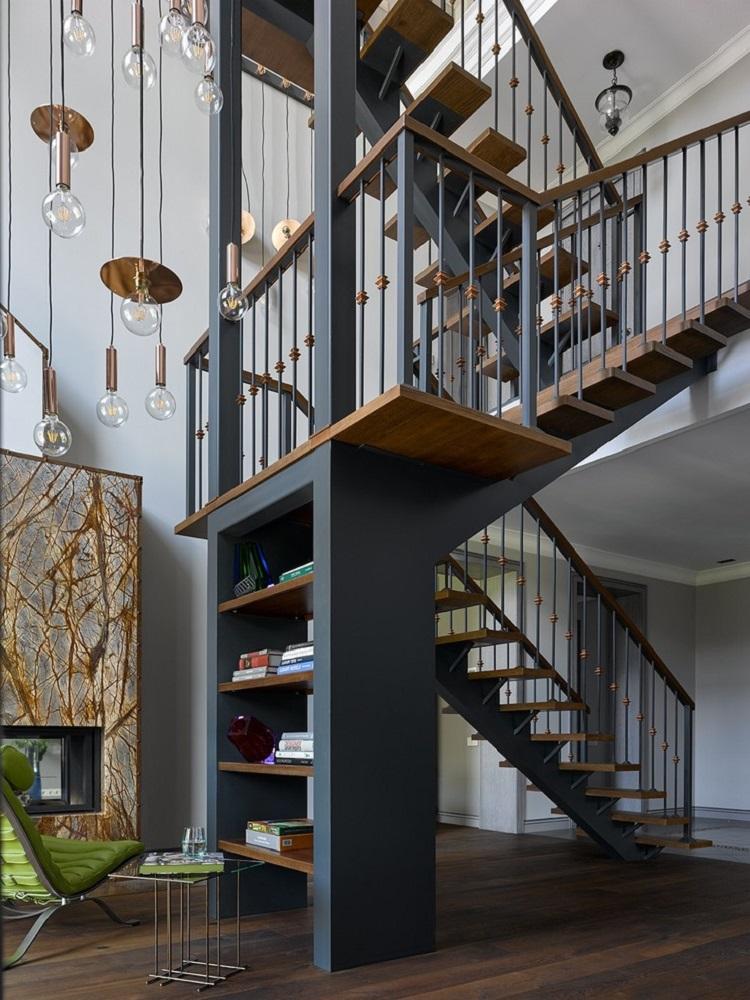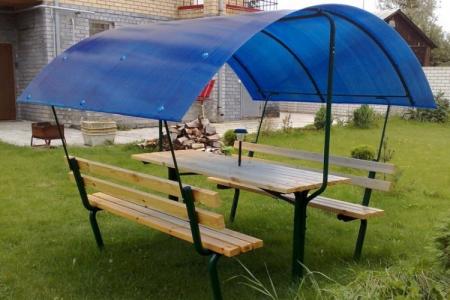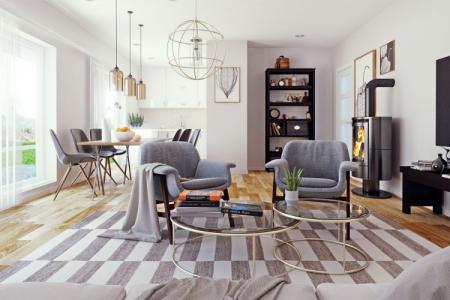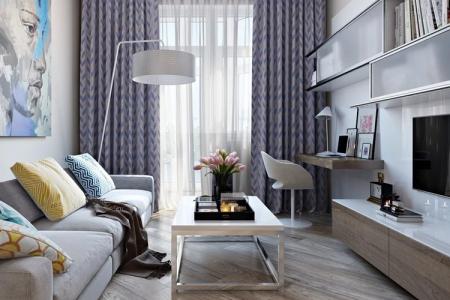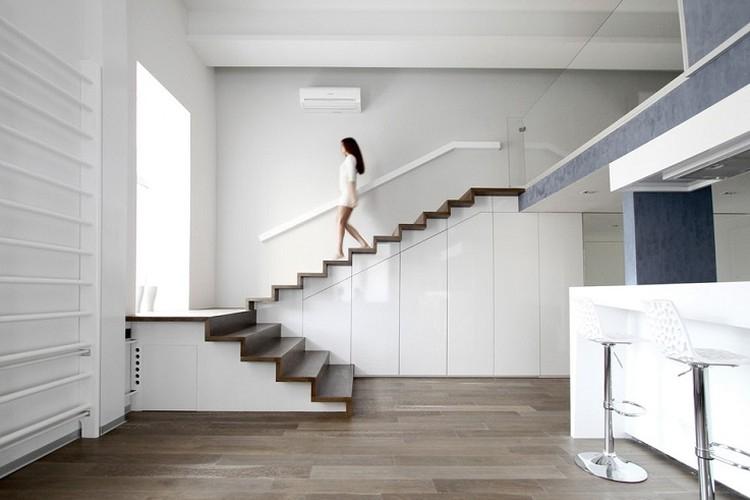
An interfloor staircase is a rather large structure, and therefore immediately becomes a significant part of the interior. A high-quality climbing structure should not only be comfortable and safe, but also aesthetically pleasing. How to take into account all these parameters, as well as how to rationally use the space under the stairs - read in this article!
Types of stairs
The first thing you need to decide on before installing the stairs is its design features. Based on this parameter, three large types can be distinguished: marching, screw and bolts.
Marching stairs
This type of staircase is most often found. It is convenient to climb and descend along the marching structure, which cannot always be said, for example, about the screw. At the same time, the sustainer ascent requires a large amount of installation space.
To make such a staircase as convenient as possible in operation, take into account several nuances: the ascent angle is about 45 degrees, the number of steps without a span is from 3 to 15, the depth of the steps should be comparable to the length of a human foot (at least 25 cm), and the height - 16 -18 cm.
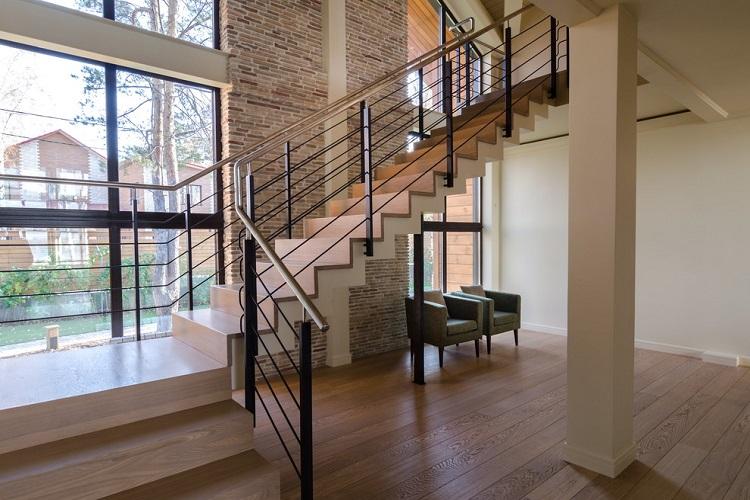
Spiral staircases
As already mentioned, the helical variation is not entirely comfortable to use, but it is very compact and beautiful. As a rule, the structure is placed in a circle with a center in the support post and a radius equal to the length of the step.
If the length is 1 m, then the area occupied by this staircase will be one and a half times less than the marching one. But already with a length of 1.5 m, the use of a spiral structure is not entirely justified, since the required space is equated to a straight staircase.
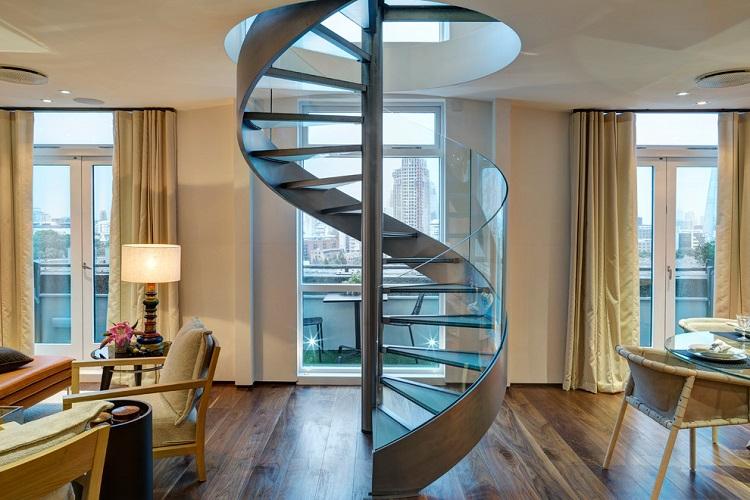
Stairs on the bolts
The stairs on the bolts appeared relatively recently - in the second half of the twentieth century. They look modern and light, but do not be fooled by their fragile appearance - such a design is reliable and durable.
The railing and steps are fixed with bolts on the wall, or they are held on a steel rod support. It is noted that each stage is capable of withstanding a weight of more than 1,500 kg.
Another nice bonus is that wooden stairs with such a structure do not creak. This effect is achieved due to the lack of contact of wooden elements with each other.
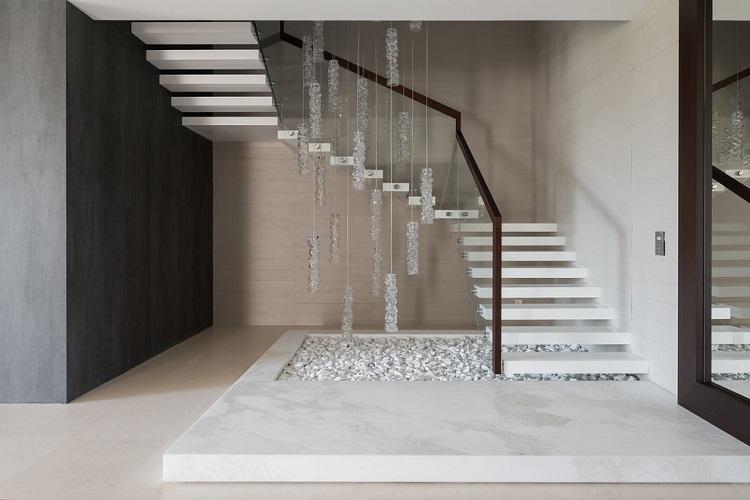
Staircase style and design
In order for the rise to look appropriate and become a logical continuation of the interior decoration of the house, it is necessary to select a structure in a single style.
Modern style
The staircase to the second floor in a modern style must comply with the basic tenets of this trend in design. Clear and austere forms, basic color schemes, the absence of unnecessary details, modern materials - if all this can be said about the building, then it will definitely fit into this context.
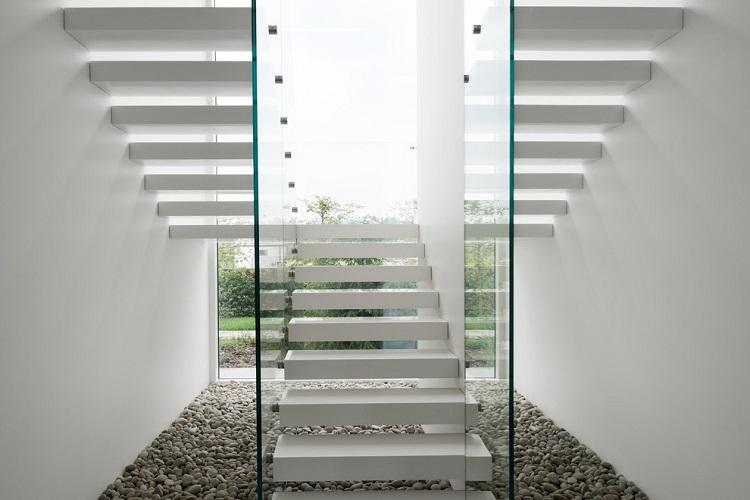
Classical
In the case of a classic interior, almost everything works the other way around. Rounded and smooth lines prevail here, and decorative elements are also appropriate. Styles are in touch only in calm colors and restraint.
Traditional staircases look beautiful in wood and stone. It is worth giving preference to natural materials or their high-quality artificial counterparts.
The spiral staircase with openwork railings will definitely not go unnoticed. You can also stop at the marching variation with forged railings and a grandiose mirror that adorns the flight.
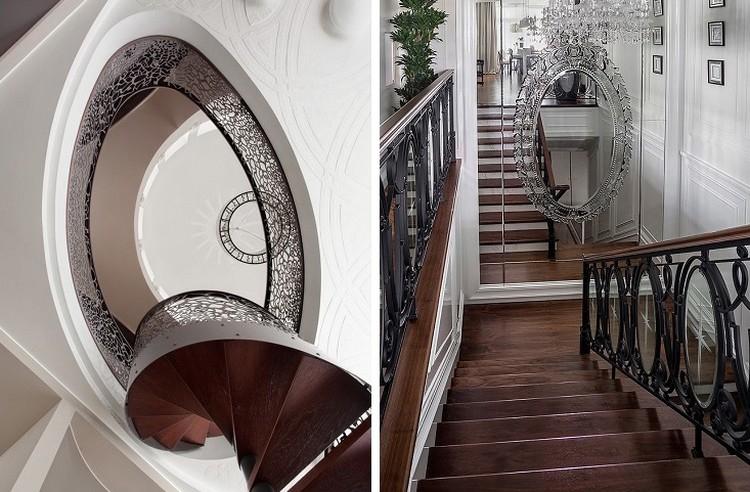
Loft
For an industrial look, rough surfaces are fine. For example, you can pick up a staircase made of black metal with large wooden steps, matching in shade with the floor and other wood in the interior.
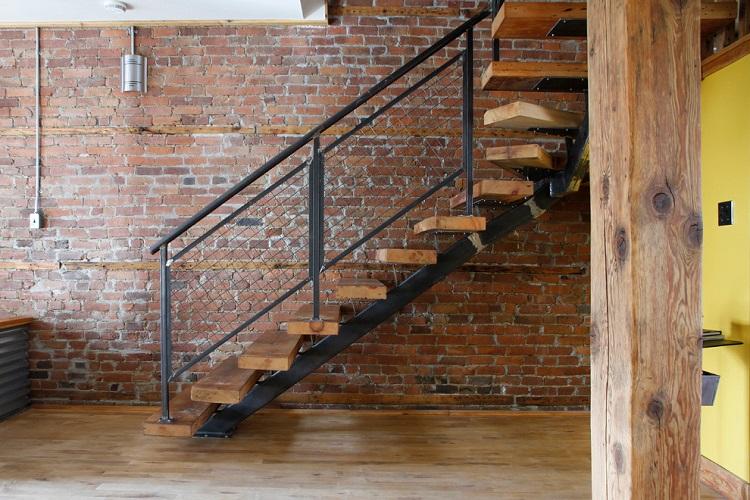
Scandinavian
The stylistic solutions that came to us from snowy Scandinavia are different. It can be either rustic or modern urban decor.
In a country house, give preference to the usual marching stairs on kosoura, made in light colors.But for a modern two-story apartment and a private house, a lightweight construction on bolts made of light wood is suitable.
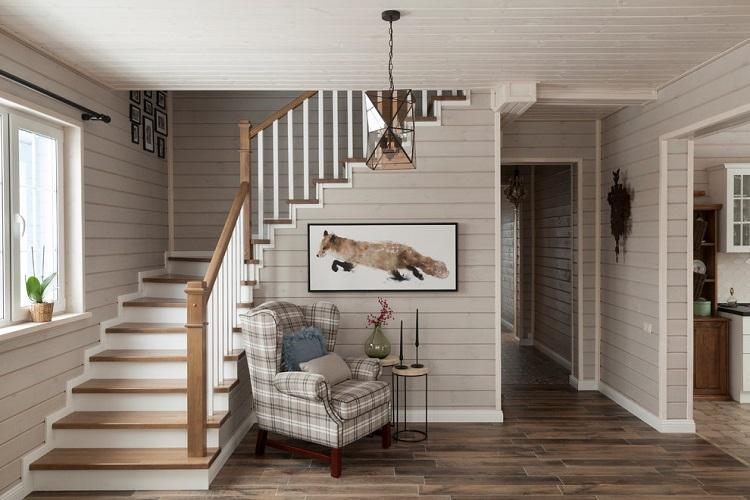
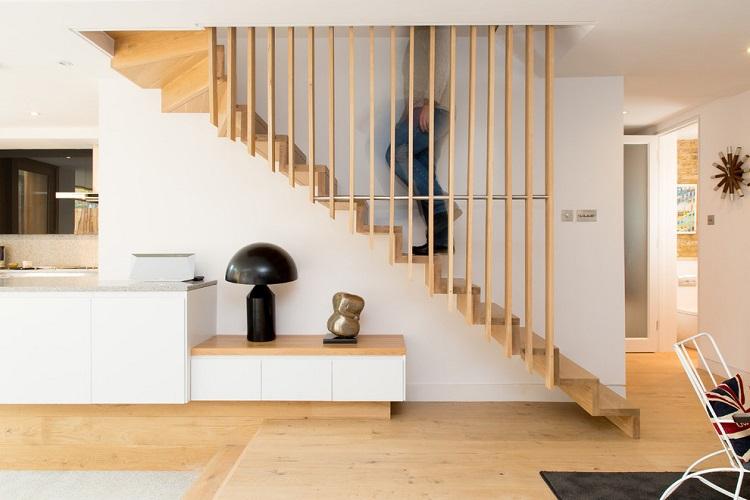
Nautical
The nautical style has many things in common with the Scandinavian. White, light shades and wood surfaces are also welcome here. But you can designate the style with the help of details. For example, ropes.
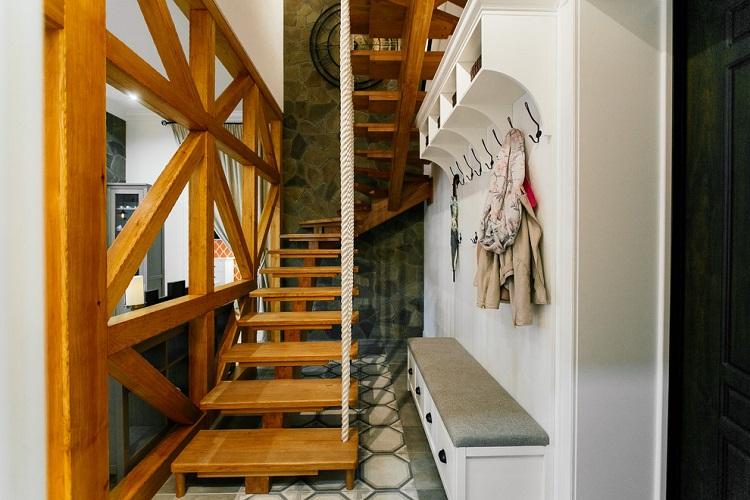
Materials (edit)
The staircase to the second floor is a global building that will remain in the interior for a long time. Therefore, it is important to select reliable and high-quality materials that fit into the overall ensemble of the environment.
Metal stairs
The metal structure will perfectly complement the room, decorated in a modern style. The material itself has high strength and durability characteristics. So, a stainless steel staircase will last about 50 years.
But painted or chrome-plated options have become not so durable - they are unlikely to please the owner for more than 5 years. Among not the most successful materials, brass and aluminum can be noted, since after a while they can darken and deform due to their softness.
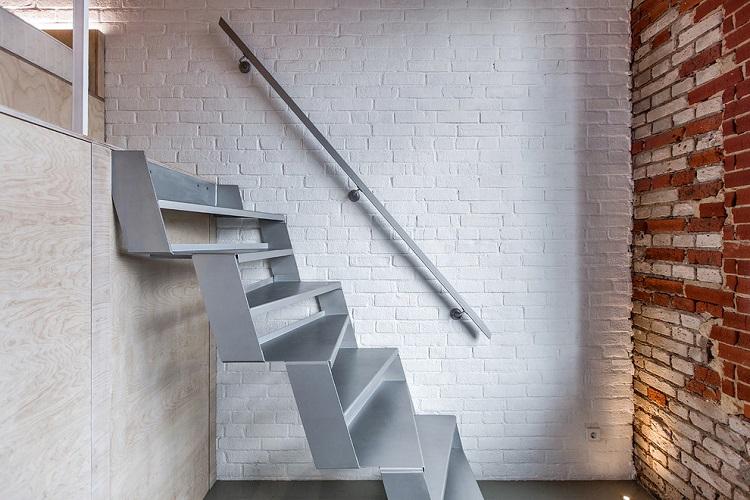
Wooden stairs
Wooden stairs look warm and cozy. They fit most organically into the interiors of country cottages in a rustic, Scandinavian and even classic style.
However, wooden steps can be present in other stylistic solutions, of course, if the room already has wooden surfaces with which they can overlap.
A large number of wood species are suitable for the construction of stairs: beech, maple, teak, walnut, ash. It is worth choosing individually, starting from the budget and the desired characteristics.
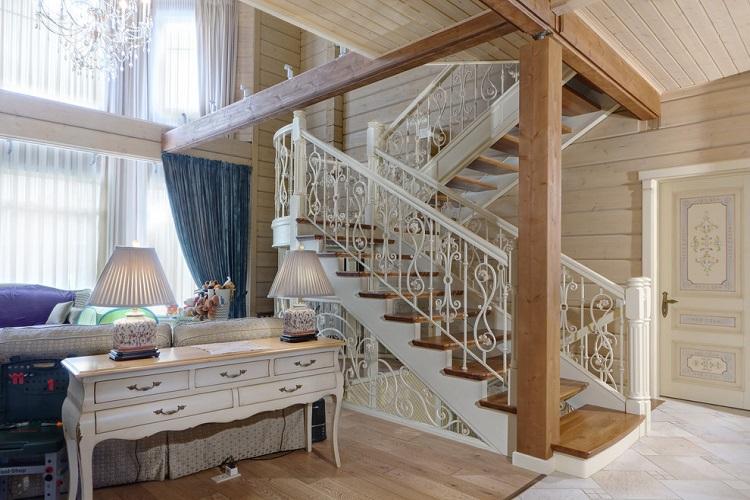
Stone stairs
The stone is durable, reliable and beautiful. Granite, marble staircases become the central element of the composition of any interior - from democratic modern to aristocratic classical.
Stone surfaces do not require special maintenance - a damp cleaning is enough. They are not afraid of temperature changes and exposure to moisture. Among the disadvantages: price (can be replaced with artificial material); cold (just lay a carpet); weight (everything is fine if this is a house with a solid foundation, otherwise you can use a structure from a different material and install stone pads).
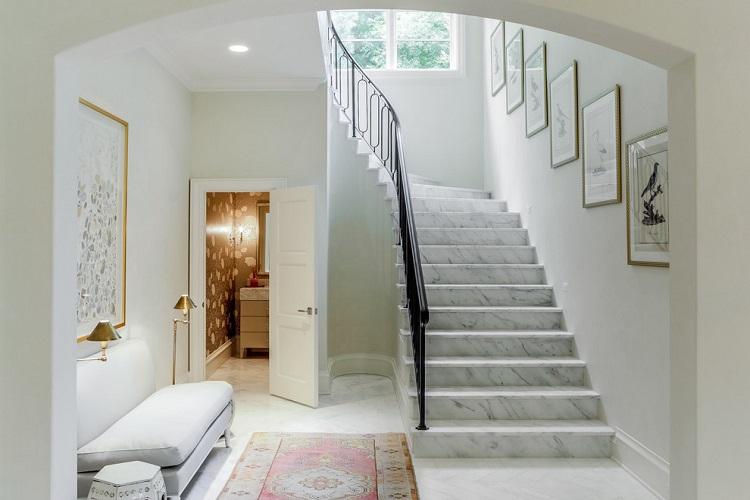
Concrete stairs
Concrete surfaces do not look light and airy, they do not seem to try to please us, and this is their charm. A staircase made of this material is suitable for modern and loft interiors. And with additional finishing, it will complement even the classic design (concrete can be disguised as marble).
With timely repair, concrete can serve for a very, very long time. The advantages also include the fact that a concrete marching structure will cost less than a wooden and metal one. Moreover, such a staircase is not so difficult to build on your own. Among the disadvantages are the impossibility of dismantling and high weight.
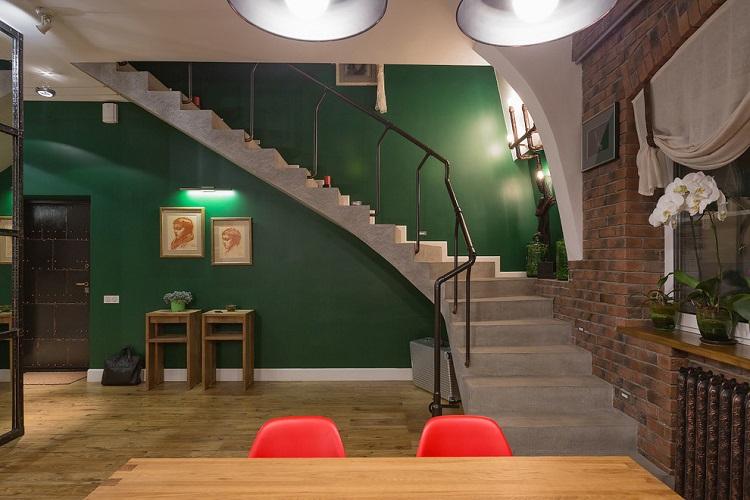
Glass stairs
The glass staircase is the perfect continuation of the modern interior. It does not burden the design due to its transparency. On the contrary, a glossy surface reflects light, thereby visually increasing the space.
For convenience and aesthetics, such a staircase can be illuminated with an LED strip at night. And to prevent the steps from slipping, you can install rubber or wooden inserts.
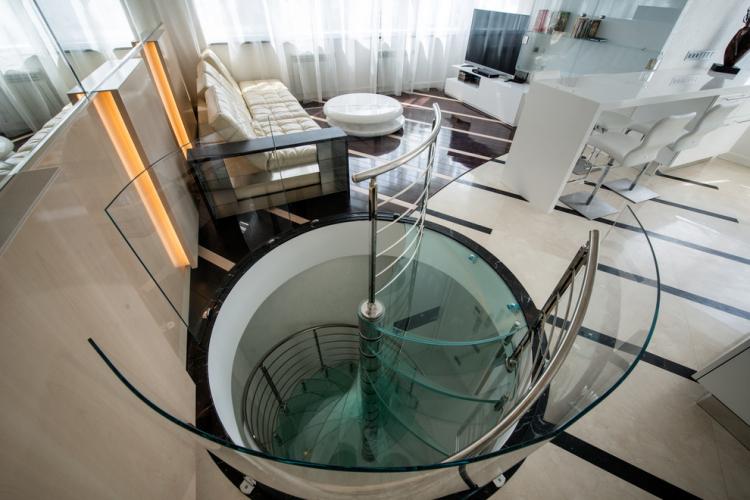
Place under the stairs: use it profitably
So, we have already decided that the marching staircase, and in a sense, the analogue on the bolts, occupy a considerable amount of space. Why not then figure out how to use the remaining space to the advantage? Here's what can fit here:
Pantry. If someone in the house is fond of harvesting cucumbers or jam for the winter, then you can equip a pantry for mouth-watering supplies;
Laundry. Household appliances require space.It is in the stairs that you can build a washing machine and dryer, as well as take care of the placement of an ironing board, iron and household chemicals;
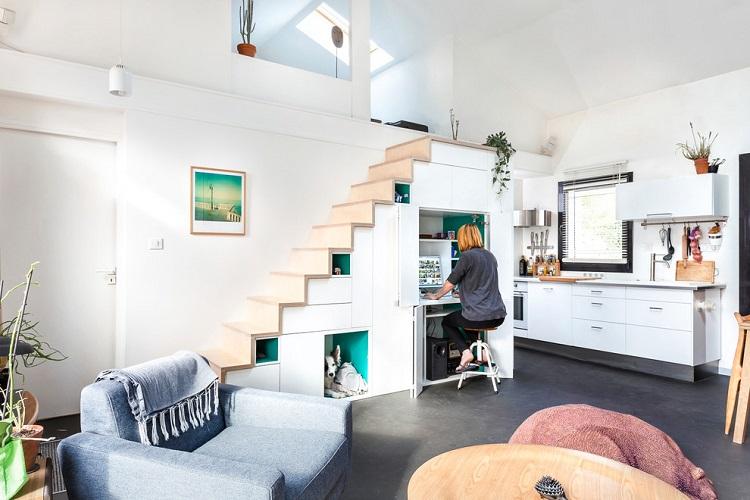
Cabinet. A quiet corner is what you need for work and homework. One has only to take care of high-quality lighting;
Wardrobe. The stairs can be used to store shoes and clothes. Large storage systems will keep things tidy and clean;
Game room. Children are very fond of all kinds of huts and shelters, so you can give this useful space to them.
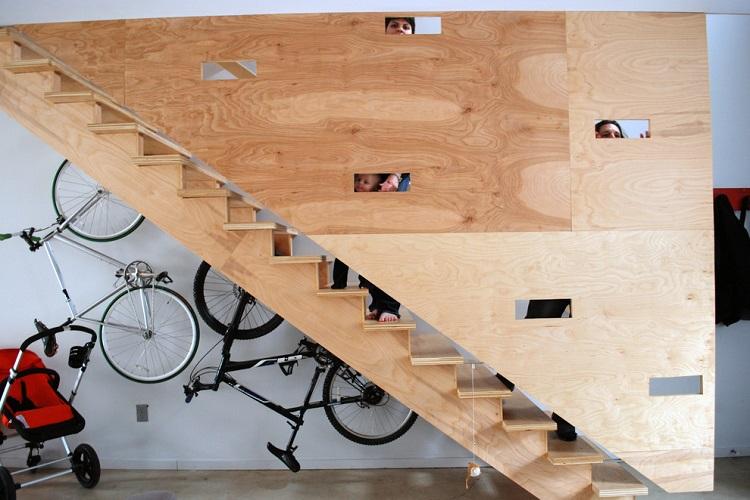
Where to place the ladder
It is necessary to decide where it is best to place the stairs at the design stage. The staircase to the second floor is a fairly large building that can affect the entire composition of the interior. Potential dangers that you can face are space clutter and lack of natural light.
Therefore, in the case of a small room, it is better to install an easy option on bolts or a spiral staircase. By the way, the latter can be placed even in the center of the room.
But for the rest, a place in the corner or along the wall is suitable. Of course, if we are not talking about the grandiose front staircase in a large house. In general, it is most convenient to install a ladder in a walk-through room so as not to disturb the resting household members.
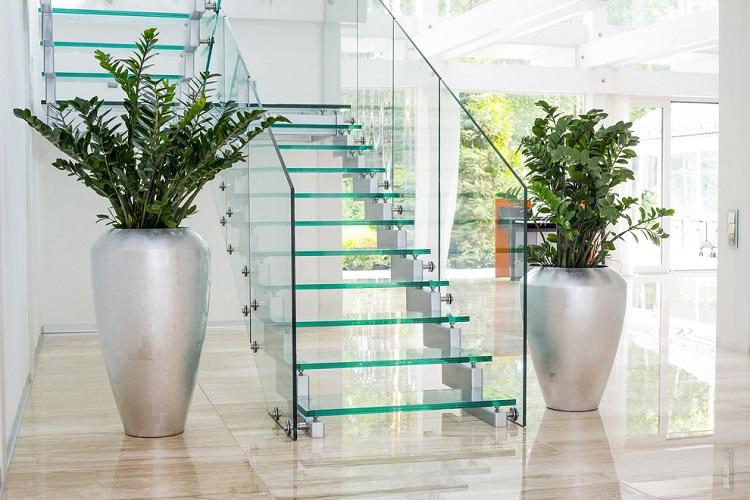
Stairs to the second floor - photos of real interiors
We tried to highlight the main points that you have to deal with when designing stairs to the second floor. For even more design and placement ideas for a modern lift, check out the photo gallery below. Happy viewing!
